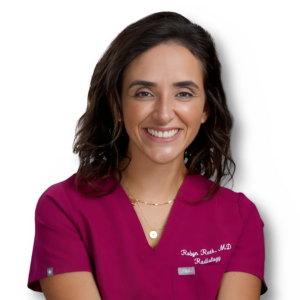Now that breasts have your attention, here’s what you need to know about the controversial Novartis Super Bowl ad.
Perhaps you were one of the 126 million people who caught the perfectly timed and themed Novartis Super Bowl ad, a few minutes moments before halftime, featuring bouncing cheerleaders and Mardi Gras goers during the biggest football game in the Mardi Gras capital of the world.
The purpose of the ad? To give breasts the attention that they deserve, and boy, did they get your attention!
The 1 minute spot was funded by Novartis, a pharmaceutical company, and featured Wanda Sykes, a breast cancer survivor herself, as well as Hailee Steinfeld, and a few other cameos including the queen of NFL merchandise, Kristin Juszczyk, who’s mom died of breast cancer.
But few could get past the jiggling boobies to get to the purpose of the commercial: to bring awareness to the rise of young breast cancer and emphasize the importance of early breast cancer detection; to point out that 6 million women who were watching the Super Bowl would be diagnosed with breast cancer during their lifetime. (Of course, including images of breast cancer survivors would have gone a long way, but baby steps.)
With early breast cancer detection, survival rates are greater than 99%, but half of women are not undergoing age appropriate breast cancer screening. (I could write a 12-page dissertation on why this is, but largely, lack of access, education, confusion, & RAMPANT MISINFORMATION!!!)
The goal of the commercial was to direct people to www.yourattentionplease.com where women under age 40 could calculate their breast cancer risk, and those over age 40 could find a screening mammogram site and get an annual reminder. The site also offered tons of resources for those affected by breast cancer.
Many were outraged by the commercial and could not get past the sexualization of breasts which are deeply entangled in the very fabric of our culture as the ad so eloquently points out. Was Alix Earle not sexualized in her bikini-clad Poppi ad or nearly naked Carl’s ad?
But now that breasts have your attention, here are the important take-home points from the Super Bowl ad that you may have missed:
Everyone is at risk for breast cancer, some WAY more than others. The two greatest risk factors for developing breast cancer are being female and getting older. (PS how depressing is that?)
We all know the statistic, 1 in 8 women will develop breast cancer over her lifetime, which is 12.5% lifetime risk for females. (Of course, this does not include the 2,800 men that will be diagnosed with breast cancer this year, but I digress.)
But there are people who carry a higher-than-average risk of breast cancer (12.5% is “average,” >20% is considered “high”) based on a number of factors including age, weight, family history, genetic mutations, menopausal and pregnancy history, just to name a few.
It’s important to understand your personal breast cancer risk, ideally before the age of 30, so we can identify high risk individuals who would benefit from earlier or more frequent breast cancer screening. (detailed below)
Your breast cancer risk assessment would ideally be calculated with your primary clinician or OBGYN, but you can easily calculate your breast cancer risk at www.yourattentionplease.com using the Tyrer-Cuzick calculator.
It’s important to note that the calculator is far from perfect and tends to underestimate breast cancer risk in Black women, and also undermines the fact that most women who are diagnosed with breast cancer do not have a known family history or genetic mutation, but it’s a good place to start.
Early detection saves lives. Annual screening mammography beginning at age 40 for average-risk women* saves the most lives. Period. Other recommendations exist, but every 2 years prioritizes anxiety over early detection. (Don’t even get me started on the patriarchy of it all.)
Also, these recommendations only apply to average-risk women and imply an understanding of personal breast cancer risk which is misunderstood and not widely discussed… until now.
High-risk individuals (>20% lifetime risk of breast cancer) should start breast cancer screening earlier and more often, as early as age 25 for MRI and 30 for mammography, ideally alternating every 6 months. A good rule of thumb is to start breast cancer screening 10-years before a relative who was diagnosed with breast cancer.
There is a rise in young breast cancer, and most people who are diagnosed with breast cancer do not have a known family history or genetic mutation. This unfortunately was not addressed in the Super Bowl ad.
Recent data from the American Cancer Society’s 2024 Cancer Facts and Figures shows increasing rates of breast cancer under the age of 50, with the largest increase in women in their 20’s, most of which are younger than even the strictest breast cancer screening guidelines.
About 80% of young people discover their own breast cancer, yet even the self-breast exam is controversial and technically, not recommended by the American Cancer Society in average-risk women.
The Novartis Super Bowl ad did what it set out to do, to give breasts the attention they finally deserve, and to start the conversation about breast cancer risk and the importance of early detection. It also emphasizes the cultural obsession with breasts while still remaining taboo.
There is a young breast cancer epidemic going on right now, so we must educate and empower those who may be at risk so they can benefit from early cancer detection.
So now that breasts have your attention, visit www.yourattentionplease.com to find out your breast cancer risk, set a reminder for your annual mammogram, and find a screening site near you. And GO BIRDS!!! 🦅
